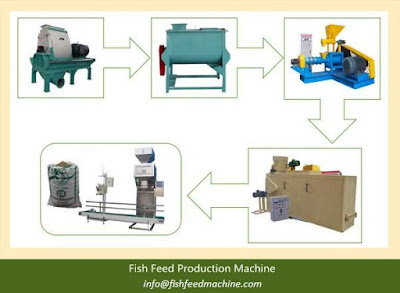Significance of Using Local Fish Feed Raw Material
As the fastest growing food production industry in the world, aquaculture and fish farming industry in Nigeria also plays an important part in delivering high quality proteins to the market, so lowering the feed cost - main cost factor in aquaculture has great significance and value in stimulating the development of aquaculture. Meanwhile, with high price and unstable supply, imported fish feed has always restricted the development of Nigeria fish farming. Furthermore, from the perspective of environment and economy, people should focus on using local feed ingredients to produce nutritional and healthy aquafeed through fish feed extruder and other equipment, reducing feed cost as well as creating an effective value chain and pull whole aquaculture industrial chain.
Available Local Fish Feed Raw Materials
According to countless practical experience, a plenty of high quality feed resources exist in many places, so raw materials and ingredients required to produce high-grade fish feed are readily available in Nigeria. For example, leftovers in the process of livestock husbandry development, such as viscera, blood, bone and fur of pig, cattle, sheep and chicken, can become superior-quality feed after effective collection and proper fish feed production process. For those who want to make fish feed pellets for lowering cost without reducing feed quality and nutrition, it is very crucial to figure out the feasible feed ingredients in local Nigeria and grasp the access to safe, available and economical raw materials.
How to Produce Fish Feed with Local Raw Materials
With such abundant local resources, fish farmers may consider how to produce fish feed by themselves instead of purchasing feed so as to lower their farming cost and gain higher profits. First, choose scientific and nutritional aquafeed formulation; second, master advanced feed processing technology; Third, choose suitable fish feed making machine.









